
Article originally published by The Andrew Martin Report, May 4, 2011
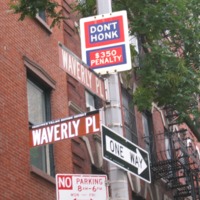 Those who are not native-born to New York City, and even a sizable number of those who are, often have difficulty making head or tail of the pattern of the streets in Greenwich Village’s westernmost portion. West 4th Street actually bisects West 10th, West 11th and West 12th, and West 12th then bisects itself into Little West 12th Street and Gansevoort Street, a holdover from whence the city was cobbled by the Dutch. As if that wasn’t confusing enough, West 9th is in fact followed by West 10th as far east at 7th Avenue South (to differentiate it from 7th Avenue proper, which begins at 14th Street), but Charles Street and Perry Street follow immediately thereafter before one reaches West 11th Street, which is in turn followed by Bank Street (and sometimes Horatio Street and Jane Street depending on the avenue) before reaching West 12th Street. It is, therefore, perfectly logical for one to hear of the intersection of Waverly Place and Waverly Place, one block below Christopher Street just west of Gay Street, for nightlife history was indelibly reached there with the creation of the legendary piano bar/cabaret Waverly Waverly in 1981, where the party raged with reckless and wild abandon late into every evening for the next four years.
Those who are not native-born to New York City, and even a sizable number of those who are, often have difficulty making head or tail of the pattern of the streets in Greenwich Village’s westernmost portion. West 4th Street actually bisects West 10th, West 11th and West 12th, and West 12th then bisects itself into Little West 12th Street and Gansevoort Street, a holdover from whence the city was cobbled by the Dutch. As if that wasn’t confusing enough, West 9th is in fact followed by West 10th as far east at 7th Avenue South (to differentiate it from 7th Avenue proper, which begins at 14th Street), but Charles Street and Perry Street follow immediately thereafter before one reaches West 11th Street, which is in turn followed by Bank Street (and sometimes Horatio Street and Jane Street depending on the avenue) before reaching West 12th Street. It is, therefore, perfectly logical for one to hear of the intersection of Waverly Place and Waverly Place, one block below Christopher Street just west of Gay Street, for nightlife history was indelibly reached there with the creation of the legendary piano bar/cabaret Waverly Waverly in 1981, where the party raged with reckless and wild abandon late into every evening for the next four years.
The club became an overnight sensation as governed by owners Johnny Savoy, Johnny DeMaio and Johnny Pool, and with the employment of singer/instrumentalist Jerry Scott as its top attraction, along with the encouragement for visiting singers, both of renown and obscurity, to take the microphone and belt out a few tunes. Pool, a vibrant personality by nature and an impresario to the core, came south to New York in 1963 from his native Boston and quickly set up shop in the burgeoning pre-Stonewall scenes of both the Village and Fire Island (initially establishing himself as a
lifeguard on the beaches of Cherry Grove) and also the quickly-growing bar community on East 53rd Street besides the Stonewall enclave, before teaming up with Savoy and DeMaio, to launch their collective brainchild when the opportunity arose to acquire the space. “It was an extremely exciting time to be doing what we did when we opened Waverly Waverly,” he says. “Cabaret was just taking hold, everything was changing in New York, and we had a great location. We were in the right place at the right time and everybody helped make it even more so. Everybody worked there or stopped in to sing,” he continues. “Ricky Ritzel played, Charlie Lindberg played, Steven Lowenthal played, George Sardi hosted brunches on Sundays, Jill Cohen did her first cabaret act there, it just didn’t stop. We had a beautiful four years.”
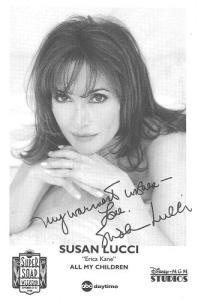
Singer-pianist Tug Wilson agrees. “Waverly Waverly was the piano entertainment club we all frequented, if we had aspirations in the business. The clientele was mixed, and not necessarily gay. Jerry Scott, the quintessential host of the piano bar genre, was the entertainment. I met Jerry when I was sixteen years old in Houston, in a club he played there. My father would take me there to get experience listening to, and singing with, what he called a true professional in the entertainment business. It was a magical time, and Jerry was always very supportive to all of us with theatrical and cabaret aspirations. He had no ego concerning this, because he truly had no aspiration to be anyone else than who he was; a singing pianist entertaining people. This was always the key to his success.
At twenty-one I moved to New York City, and I followed Jerry, playing with small groups on the East Side hotel circuit. By 1983, I had completed three national tours, and was playing piano and singing at Rounds on East 53rd, where everyone played at one time or another. Every time I was not in a show I would return there over the years, but that’s a different story. At the onset of Waverly Waverly, I was doing Off-Broadway musicals, and my friends and I would go there and sit in to support Jerry. He was always humble, and made everyone so comfortable. I didn’t even know who owned the establishment, because it was all about what Jerry Scott had created for the scene. It was place for us to gather and hone our craft, no matter who you were in the business. It was inspiring, and the customers were faithful to the club and to Jerry personally. He had absolute magic when it came to performing in this genre, and the people he attracted were diverse and felt comfortable being themselves. Pure gold.”
Award-winning cabaret artist Jill Cohen (now Jill Cohen-Wilson) offers her own take. “I did my very first cabaret show with Jerry Scott at Waverly Waverly in 1985 . It was a Sunday brunch, and I was actually paid a flat salary of seventy-five dollars, which was amazing. But it was tough singing over the sounds of plates banging, loud waiters and people who were there to eat, not to listen to a show. John Hoglund had introduced me to Jerry, and that’s how I got the booking. The next time I did a Sunday brunch, Paul Sportelli played for me. This was the beginning of my foray into the cabaret scene.” Legendary cabaret journalist John Hoglund elaborates, “In the Waverly Waverly days, I was Andy Garcia’s manager and had just started writing for Private Lives. I had quickly come to know many
eclectic club performers, including everybody from famed impersonator Charles Pierce and the campy George Sardi, to Margaret Whiting, who was so welcoming. Jack Wrangler, Rohn Seykell, Rick Page, Tug Wilson, Marta Sanders, Mercedes Hall, Lynn Lavner, Julie Sheppard, Bradshaw Smith (when he was still primarily a singer!), Celeste, Claiborne Cary, Danny Apolinar, Charles DeForest, Jill Cohen (who became a lifelong friend), Randy Lester (she and Jill became my real first piano bar friends), Bruce Hopkins, Jeff Ide, Dick Gallagher, Mark Nadler, Erv Raible, Jan Wallman, Mario Cantone (I gave him his first NYC review), Steve Gilden, Val Ryder, Jim Luzar, Annie Hughes, Sebastian Hobart, Julie Wilson (I first interviewed her in her dressing room backstage at Legs Diamond), Ruby Rims, Jamie deRoy, Jerry Scott (my beloved friend), Marie Blake, Pudgy, Betty Buckley…you get the idea. The list is endless,” he finishes.
Of course the club’s regulars have a wealth of favorite memories. Singer-entrepreneur Joni Rapp chimes in, “There are so many. Jerry Scott at the piano, playing for almost anyone who was able to carry a tune from celebs to up and coming stars. That’s a great memory. And the sheer beauty of the design by Richard Tautkus blew me away when I first went there; it was so 1930s nightclub. The camaraderie was amazing, too. I made many friends there that are still like family to this day. And I played many Sunday brunches, at least twenty-five times, with Jerry and other accompanists I brought in. I will admit that, like Jill, I found the brunch crowd to
sometimes be a bit boisterous at first, but it was a wonderful challenge to have them quiet down and enjoy.” Tug Wilson adds, “My favorite memory of Waverly Waverly was watching someone come out from the kitchen and sing with Jerry. That was Andy Garcia, whom John Hoglund was managing. He had a consuming passionate tenor that actually would make people want to touch him from their seats. A rare, God-given, natural operatic gift, which Mr DeMaio helped cultivate. He would be the only man I ever attempted to logistically have a relationship with, but it was doomed for failure; he had problems accepting his sexuality, even though at first he openly loved me in front of all his friends. The more I invested in his career and well-being, the more he resented me. It was passionate and sad. He got to a certain level with our guidance, but he turned his back on all of it. He was not literate or polished, and wound up feeling very self-conscious about himself compared to me
and others, even though I worshiped the ground he walked on. He wound up going back to sweeping hair in our friend Kaye’s hair salon in Brooklyn, and I have never attempted a relationship with a man again. It was that devastating. But I also do have fond memories of taking my teen-age cousin Lori Lynn there, and she was so excited to meet and trade nail tips with the female impersonator, Anthony Cardinale, who sang as Connie Francis. There are PLENTY of stories about her.” And John Hoglund says, “I agree with Joni; the best memories are of Jerry Scott. And also Andy Garcia having to stand on the piano because of the crowds on Gay Pride Day, singing “Battle Hymn of The Republic” with an overflow crowd in tears. Andy started out as a cook, and Scott Barbarino was a waiter. I also very fondly remember Sandy Doane, a very heavy, glorious soprano who sang with Jerry a lot.”
But as with any shared experience of a space so dearly loved by so many, there are also memories not quite so fond. Tug Wilson mentions, “My least favorite memory is bearing witness to Sandy Doane, who inherited a lot of money but literally ate herself to death at Waverly Waverly. She had a lovely soprano voice, but as time went on she ballooned to over five hundred pounds and she couldn’t even fit through the doors at the end of her life. She went there because we accepted her, and she died there for the same reason.” Joni Rapp says, “My least favorite memory, and it wasn’t even a bad memory but it was just so funny, was the nuns in the convent across the street, who always complained about noise on Sunday afternoons. It was a constant battle, with them opening and closing windows and us alternately not caring.”
After the club’s closing in 1985, and with the three growing restless to recapture the success of Waverly Waverly, as well as the fact that it had been Savoy and Pool’s first chance to open a club and they wished to be back at the helm, they lucked into finding a new space on West 14th Street a year later in 1986. “It was just a big factory room, honestly,” says Pool. “There was NOTHING there, and we all just had no idea what to do with it. But, and I guess this shows you how sometimes people will get the same thought at the same time, Johnny and Johnny and I said, ‘Let’s build an uptown bar in a downtown space. We’ll make it really chic, like Waverly was, but let’s really blow it up.’”
Two bar areas, a piano bar and a circular bar, were installed as quickly as possible, while Pool made arrangements for hiring staff and musicians (of which, once again, Jerry Scott would serve as headliner), and the new club was christened Oh Johnny. “It was the most wonderful underground nightclub of all time,” Pool says today, “and anybody who was ever there will agree. I felt like the Sol Hurok of the underground. Patti LuPone would stop in, Joan Rivers came in, Sue Simmons, Catherine Deneuve…there’s not enough room to mention everybody. It was complete magic.” It should be noted that it was around this same time that Pool and George Sardi, along with Jewish lesbian cult legend/singer/pianist Lynn Lavner, began producing a leased access show from the club on Manhattan Cable Network entitled Gay Morning America, which not only hosted such guests as John Wallowitch but also followed the immensely popular The Robyn Byrd Show. Here Lynn Lavner chimes in, “My introduction to Johnny Pool came while I was
playing piano bar at Blue Skies on West 10th Street. I had just turned down a Provincetown gig that would have taken me out of town for months, and I didn’t want to leave my partner and daughters. I think it was George Sardi who came in with Pool to check me out. That led to three seasons at the Pool Bar in Cherry Grove, an opportunity to book other performers into the cabaret there, and a couple of years on the cable TV show. And,” she adds, “Pool was a dream to work with. He was always accessible and generous, not to mention handy with a rubber chicken. His are still the only martinis…oops, I mean Pool-tinis…I ever liked. Off-season, there were the Sunday brunches, where so many of the Village gang performed for the fun of it. But the party was over with the AIDS epidemic. I began to travel with my act in 1984, playing gay venues, festivals, resorts, and fundraisers for the guys. After thirteen years of travel to forty-one states and eight foreign countries, I retired. But I’d give a year’s social security for one night in the old days of the clubs or the Pool Bar, if I could only see some of those handsome faces again.”
A whole new crop of fond memories would begin in full flood at Oh Johnny. John Hoglund, who by that point had become cabaret editor for The New York Native and Theater Week, says, “There are way too many memories to list. Andy Garcia came into his own during that period, and I got him into cabaret, where he won awards. I will always remember his first standing-room-only brunch show, with most of the cabaret community there to see this awesome singer everyone was talking about. I also remember the night Patti LuPone came in, slightly inebriated I must say, with Dick Gallagher, and was persuaded to sing “I Dreamed A Dream” at almost 2:00 am. She shouldn’t have,” he chuckles. “But seriously, I lived in both clubs, many nights till closing. Saw many notables and unknowns. Probably one night sticks out; it was the night I produced the very first benefit for a little known organization called God’s Love We Deliver. Later, I also produced one of the very first benefits for Broadway Cares. Oh, and I also had a great talk there with Joan Rivers, who was carrying her dog Spike, and thought she was in Nell’s, which was right next door!” Joni Rapp agrees, “It was great fun, and always hilarious, when people thought Oh Johnny was Nell’s and used to just wander in by mistake…and stay! The whole
experience was wonderful; I was deeply involved there between two clubs of my own I had opened (Trivia and Rappsody), and all three Johnny’s were awesome! Not only did I do many shows at Oh Johnny on a regular basis (Johnny DeMaio had been my accompanist on and off since the early 70s, so we had a great musical connection), but I also was a singing bartender there. And cook, and any other odd thing they needed. What a great bunch to work for and with! And again there was the beauty of Richard’s beautiful design. I already knew Johnny Savoy from the old days at Gypsy’s, when he played with Judy Sexton. And George Sardi was a good friend, and he interviewed me on Gay Morning America.” And Tug Wilson finishes, “It was primarily gay, and had two owners instrumental in its success. DeMaio and Pool had a vast gay following, and we became his stars in the gay world. Not only in NYC, but in Fire Island every summer. Jerry,
of course, was the backbone of the entertainment, but by this time I was capable of holding my own. But we were all supporting stars in my opinion. The club had a jungle motif, and it was fun; Waverly Waverly has a serious look to it, while Oh Johnny sold drinks and a completely different feel. My favorite memories were of Johnny DeMaio actually playing piano. Rarely, but sometimes, he would accompany us. Also, the joy our friend and comedienne Pudgy got from frequenting the establishment. My favorite memory was the first time I kissed Andy Garcia at that bar for the world to see. They were shocked. He was supposedly straight. Yet, he said he wanted to love me, that I looked like Jesus Christ to him. That should have been a sign. I was dating Maureen Davis at the time, and had recently taken over the helm of Stamp Out AIDS and what was to become my legacy, the birth of Broadway Cares. This was all done in its infancy thanks to Oh Johnny. I was so confused and tortured by what I was doing, but I don’t think anyone ever questioned my motives. I was just one of the gang. But in my heart I knew I didn’t truly belong. I did not have the joy and staying power of Jerry Scott. I knew he was forever, and this was passing fancy for so many of us.”
It would remain a gilded era until the nightlife scene began rapidly changing in the late 1980s. Tug Wilson says, “I remember the day the scene changed. By this time, Jerry Scott and I both had made it to playing in Atlantic City. I worked at the Forum Lounge at Caesar’s under contract and Jerry played at Resorts International, I believe. We were still important to the casino. Because attracting stars who liked music attracted money to the tables. This would all change with the onset of electronic music. I fought it, because it would destroy what I knew how to do, and it did. As soon as casinos adopted this new form of entertainment, it became standard in the business. Piano bars were replaced with bands and electronic music, and it dissipated the whole scene where we honed our craft. Young people were turning to this thing called karaoke bars, instead of supporting piano bars. It was a shame, because they never really had the experience to learn or appreciate music in its fundamental form. When you take away the track, young singers are lost; they are not musicians, students of the art as we were. I think it’s high time to introduce the genre back to the public. It would be embraced, because the older patrons miss it, and the younger ones will have the opportunity to
experience what we did in those years. It was our way of life, and I wouldn’t trade those memories for all the tea in China. It would take finding the new Jerry Scott to be the quintessential success, but I’m sure he’s out there like Jerry was, just waiting for his chance to make a difference to an audience of friends for an entire lifetime.” Joni Rapp contributes, “It was a sad time. And it was the second time I’d seen it happen. In the early 70s, things were blooming on the cabaret and club circuit, until the death knell of disco. It closed every cabaret in town, making way for even the smallest of places to hang that damned silver ball. That’s when I headed upstate and found most of my work in the mountains. I watched it begin to return in the early to mid 80s; although a few places like Marie’s Crisis had weathered the storm, they had lost mucho business to disco too. The Five Oaks lasted as long as they could, but I think when Eighty Eight’s closed in the 90s, it ended the era.”
Oh Johnny was forced to close its doors in 1988. Pool considered and still considers this a particularly black period for the fact that he not only lost his longtime lovematch, but also business partner Johnny Savoy, within twenty-four hours of one another, and DeMaio not long after. The question then becomes whether or not a Waverly Waverly or an Oh Johnny could lucratively exist in today’s nightlife climate of New York? Hoglund offers. ” I don’t think either would work as well today if they appeared. Today’s crowd is much different, and so many incredible personalities who made those places so memorable are
all gone. Most of today’s nightlife is diminished; all too many in that crowd have more style than substance. Like Tara, most of it is gone with the wind. But at least some great memories linger. ” Joni Rapp, however, disagrees.” I think Waverly Waverly would be a HUGE hit if it were to open today and have that same look and feel; the big grand piano, the nightclub atmosphere, and the mixed clientele. Oh Johnny would as well, although the layout was a bit different. But it could also work. I firmly believe that every twenty years, it’s time to bring things back, and if they were based in a good location with really good management, this would be a grand time to revive one or both. People are craving the nostalgic atmosphere of places like those, with good music, good food and drink, and good friends in a beautiful atmosphere. You can bet I’d be there with bells on if it happens.”
Whether or not such a prophecy will ever come to light, remains to be seen. However, still as spunky and feisty and devil-may-care as ever, Johnny Pool can rest comfortably in the knowledge that he created at least one brief
shining moment in the gleaming crown of cabaret’s history books, and that he, as well as Waverly Waverly and Oh Johnny, will always live on in the memory of all fortunate enough to have walked through the portals of either club and savored each moment.
All photos were provided courtesy of the private collection of Johnny Pool.
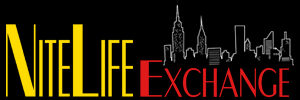


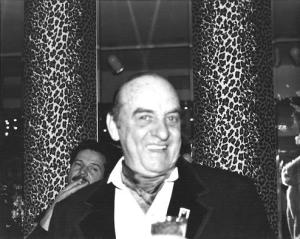
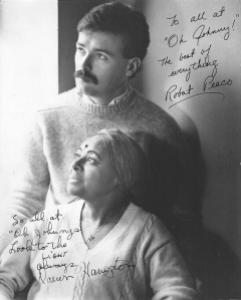
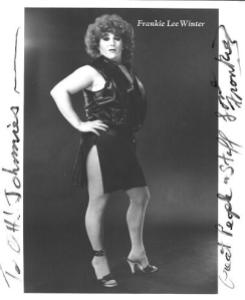
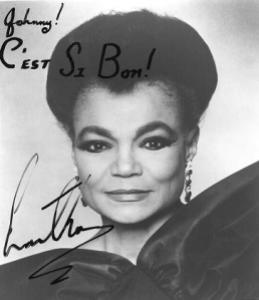
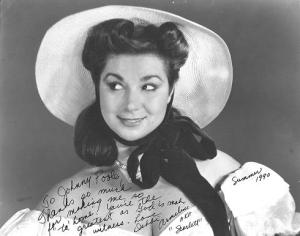
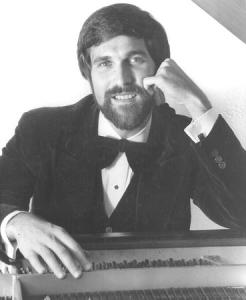

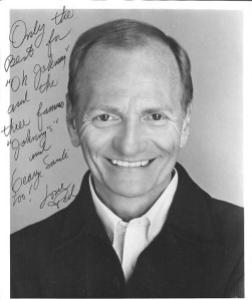
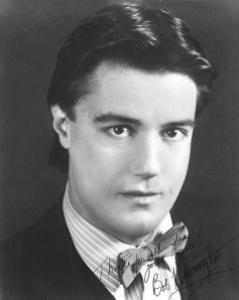
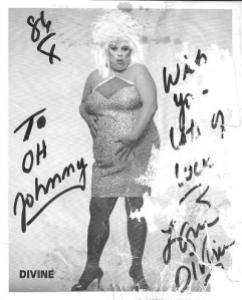
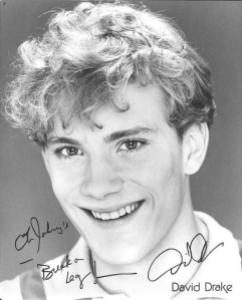
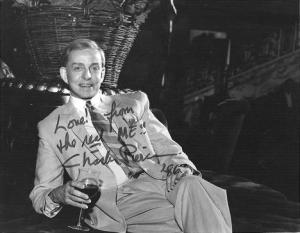
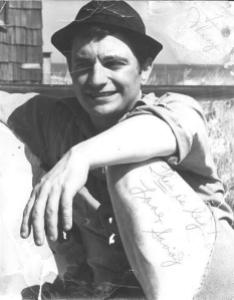
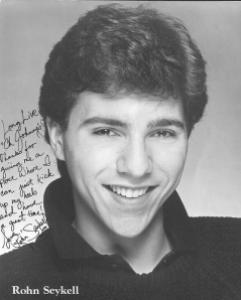
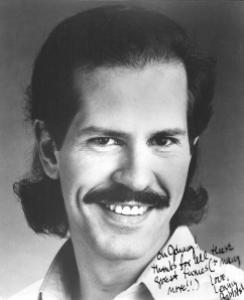

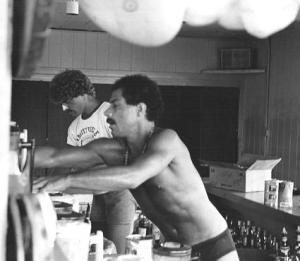







Leave a Reply